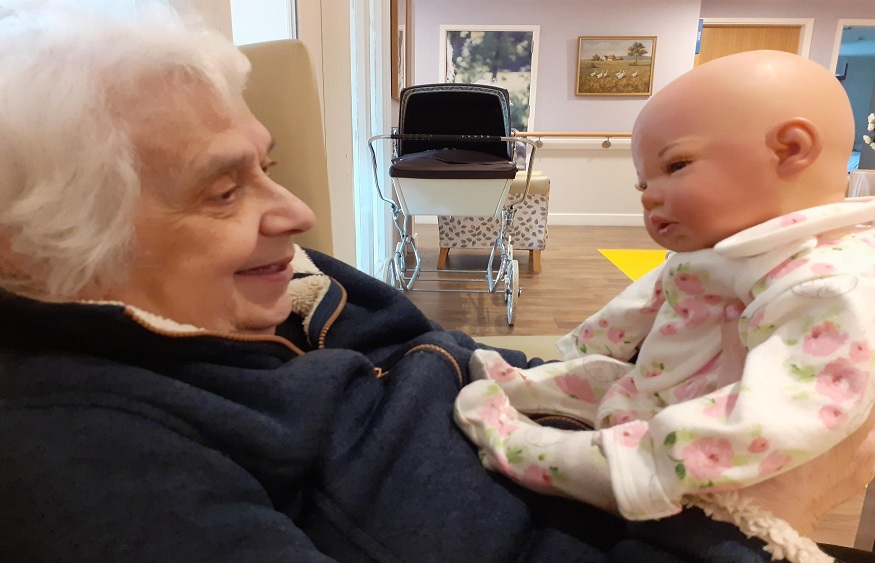It is said of the elderly that they revert to childhood, but is this the case? In some French institutions welcoming people with neurodegenerative diseases such as Alzheimer’s disease, patients are offered to take a doll in their arms.
If this therapeutic object has proven itself for several years, it is sometimes difficult for those around you to see your grandmother talking to a doll.
However, it must be understood that the objective of “doll therapy” is not to infantilize but to relieve patients.
1. The doll, a therapeutic object for seniors
Traditionally, dolls are the toys of little girls. Whether made of rag, celluloid or wax, they have been the confidantes of young ladies for centuries who spend long hours playing with them and inventing stories. However, children are not the only ones who appreciate dolls: seniors also enjoy their company. Moreover, they bring to certain elderly people many benefits .
In the United States, this is simply called “doll therapy”. It is a non-drug therapy which, like music, gardening or painting (among others), can treat patients with neurodegenerative diseases such as Alzheimer’s . Presented in the form of rag dolls with soft features and a weight equivalent to that of an infant, these therapeutic objects have already been used for several years with the elderly in certain retirement homes, in Italy and the United States in particular.
Sometimes they are replaced by teddy bears that have the same friendly and reassuring appearance. The Japanese company Fujitsu has also designed in 2010, a robot with the appearance of a teddy bear and intended for both children and the elderly . He is able to perform 320 different actions such as laughing, clapping, taking a nap or snuggling up to someone. Thus, manufacturers and the general public are beginning to become aware of the usefulness of this type of object.
2. A reassuring and stimulating transitional object
The use of dolls in the context of doll therapy is multiple. It is first of all a transitional object. Very often used by children, it is soft to the touch and helps to fight against depressive-type anxieties . This is why it is also suitable for people with Alzheimer’s disease whose cognitive functions have deteriorated and who need to be soothed.
The doll is also an object that allows patients to take care of it as if it were a real person. It also allows you to feel empathy and develop a previously forgotten protective instinct. It represents a real communication support for the medical staff.
It is therefore a therapeutic object which helps caregivers to relieve their patients , in particular when they are seized with an attack of anxiety or stress. It is not offered all day to patients but is reserved for times when the need is really felt (the toilet for example).
3. What do you do with a therapy doll?
Of course, there is no question of infantilizing the elderly by putting a doll in their arms. The objective of caregivers is above all to stimulate them. Often alone, doing nothing, staring into space sitting on an armchair, it is not rare, when a sick senior has a doll in his arms, that he starts cuddling it, combing its hair, talking to it , rock her…
In short, these are very simple and day-to-day activities that are offered. Sometimes old lullabies are hummed and suddenly the past resurfaces. The memory that is lacking in patients with Alzeihmer’s disease is then stimulated.
For the entourage, it can be very destabilizing to see your grandmother taking care of a doll. It must however be admitted that this activity is part of a therapy and that it complements other gentle methods as well as drug treatments. They are also sources of comfort and help to reassure him, so why deprive him of them?








